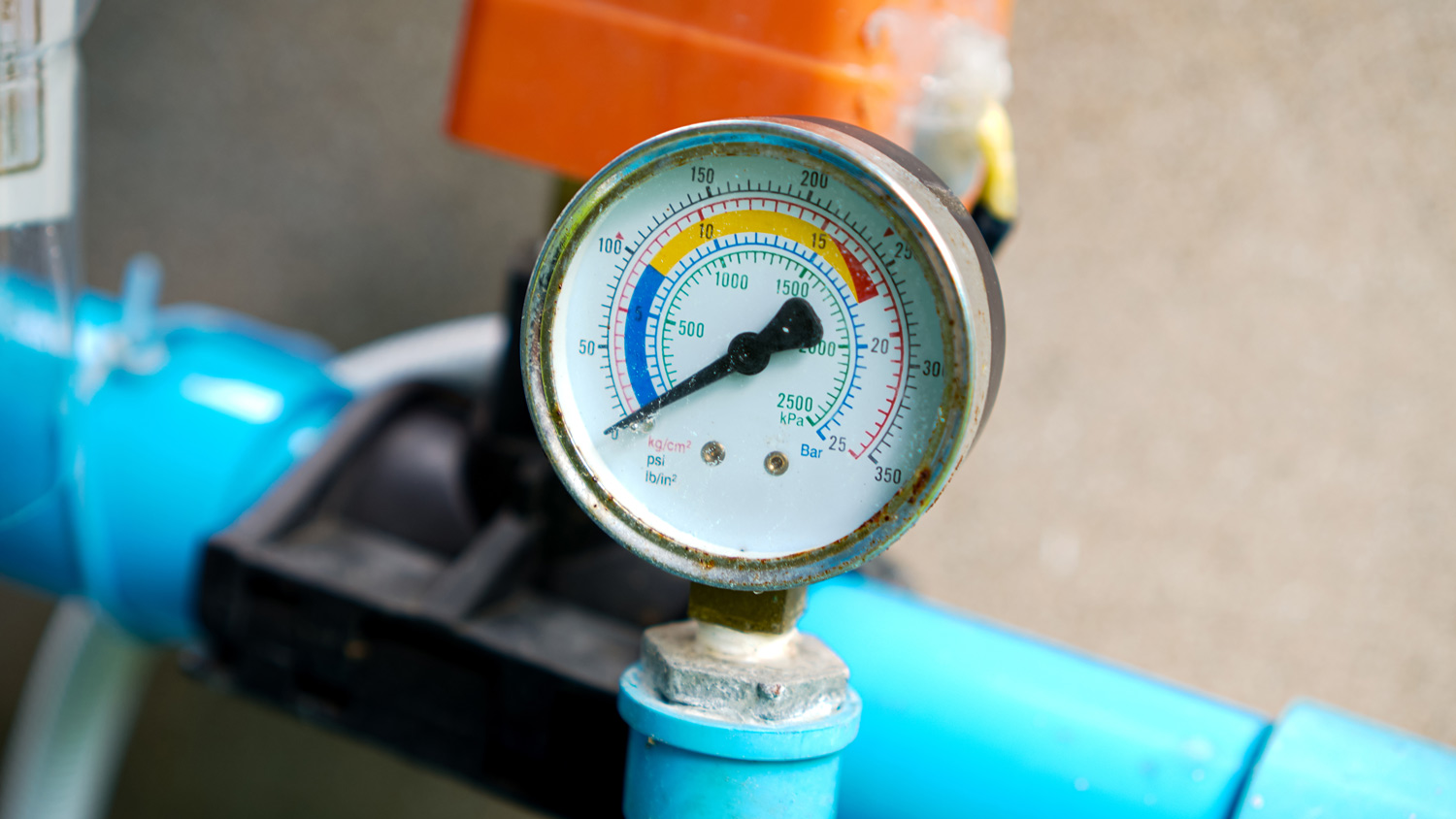
Pressure washing your fence can restore its appearance and keep your home looking great. Learn how much it costs based on factors like square footage and material.
Take the pressure off of tough jobs


Adding a pressure gauge to your pressure washer gives you better control and accuracy, which is especially important when cleaning sensitive surfaces, such as old mortar and vehicles. You can screw on an in-line pressure gauge in a matter of minutes with a quick connect fitting. Learn how to add a pressure gauge to a pressure washer in five easy steps.
A pressure gauge for a pressure washer indicates the force of the water coming out of the nozzle, displayed in pounds per square inch (PSI). An in-line pressure gauge provides an accurate read of the water pressure, helping you prevent damage to sensitive surfaces.
For example, even if a pressure washer states that it goes up to 2,500 PSI, the actual water pressure depends on the nozzle and other conditions. A pressure gauge gives you the information you need for accuracy and control.
A pressure gauge for a pressure washer costs $20 to $40, depending on the model. You can find them online and at most home improvement stores.
Choose a pressure gauge that can measure a PSI at least 10% higher than the maximum pressure of your pressure washer. If your pressure washer goes to 3,000 PSI, look for a gauge that goes up to 3,300 PSI or more. If you currently have a pressure gauge that’s rusted or needs replacement, you can remove it by unscrewing it or removing the rust from the bolt.
Call a local pressure washing company if you need advice about your specific machine or if you need help with your project.

You can easily add an in-line pressure gauge to your pressure washer in minutes with a few simple steps.
In-line pressure gauges come with a 1/4-inch bottom mount. Thread the gauge onto a 3/8-inch quick connect fitting, the standard size connection for most pressure washers. With the quick connect fitting, you can easily remove the gauge or reinstall it in the future.
Unscrew the hose from the pressure washer hose inlet. Set the hose aside while you add the gauge.
Screw the 3/8-inch quick connect fitting into the pressure washer at the hose inlet. Turn the fitting clockwise until it is tight and secure.
Add your hose to the opposite end of the quick connect fitting. Turn the hose fitting clockwise until it is tight.
Turn on your pressure washer and test the gauge to see if it works. You should be able to read the pressure gauge and determine the effective pressure in PSIs.
Extend the life span of your pressure washer and keep it in good working order by following a few expert maintenance tips. While it can be tempting to make the common pressure washer mistake of shoving it away in storage after you’ve finished a job, a few minutes of care goes a long way.
Rinse the water lines for a few minutes with non-soapy water if you use detergent in your pressure washer. A buildup of soap residue can clog the line.
Winterize your pressure washer when you’re done using it for the season, including emptying the tank and water lines to prevent freezing.
Store your pressure washer in a dry, covered place.
Remove any debris or clogs from the nozzle with needle nose pliers.
Clean the water inlet filter once per year.
Maintain oil levels in gas-powered pressure washers.
"If you don't think your pressure washer is strong enough, consider hiring a pro. Professional machines provide stronger pressure without using a smaller tip, allowing them to maintain surfaces without damaging them."
— Dylan Harris, Director of Operations at Window Hero, Charlotte, North Carolina
You can pressure wash most surfaces, from cleaning your driveway to sprucing up your patio. Depending on the condition of the surface, pressure washing can be physically taxing and take time. You can hire a local pressure washing company to handle particularly tough, dirty, or complicated jobs, like pressure washing your house.
The cost of pressure washing ranges from $100 for a small driveway to $1,400 for a two-story house. The cost to rent a pressure washer ranges from $40 to $175 per day, depending on the type of machine and the vendors in your area. On average, it costs $100 to $1,000 to purchase a mid-level pressure washer.
From average costs to expert advice, get all the answers you need to get your job done.

Pressure washing your fence can restore its appearance and keep your home looking great. Learn how much it costs based on factors like square footage and material.

Pressure washers can help you keep your home looking great. Use this guide to learn how much it costs to rent a pressure washer based on factors like type and time.

The cost to pressure wash a patio depends on the size of the surface and the type of patio you have, as well as whether you DIY or hire a pressure washing pro.

Choose the right power washer to tackle your projects with ease. Learn about gas versus electric power washers, their pros, cons, and costs.

Pressure washing your home can be a quick way to get the exterior of your house clean. But, not every part of your home can hold up to the intense pressure of power washing. This guide breaks down what can (and can’t) be safely pressure washed.

Now that you own a new pressure washer, learn how to use it like a professional so you can clean your driveway, siding, deck, and quickly and thoroughly.